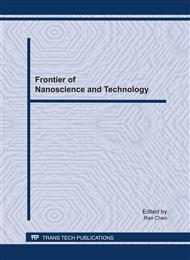p.686
p.690
p.695
p.700
p.704
p.708
p.713
p.718
p.723
Effect of Cooling Rate on the Microstructure of Cu80Cr20 Alloys
Abstract:
The effect of cooling rate on the microstructure of Cu80Cr20 alloys was studied by using vacuum non-consumable arc melting, vacuum induction melting, electromagnetic levitation and splat quenching. The microstructure evolution of the Cr-rich were analyzed by scanning electron microscopy (SEM) and optical microscopy. The results showed that nonuniform Cr-rich dendrite distributes on Cu-rich matrix for arc melted alloys and uniform Cr-rich dendrite distributes on Cu-rich matrix for electromagnetic levitation melted alloys and vacuum induction melted alloys. However, the Cr-rich phase show both dendrites and spheroids for splat quenched alloys. This means liquid phase separation occurred during rapid solidification.
Info:
Periodical:
Pages:
704-707
Citation:
Online since:
July 2011
Keywords:
Price:
Сopyright:
© 2011 Trans Tech Publications Ltd. All Rights Reserved
Share:
Citation:


